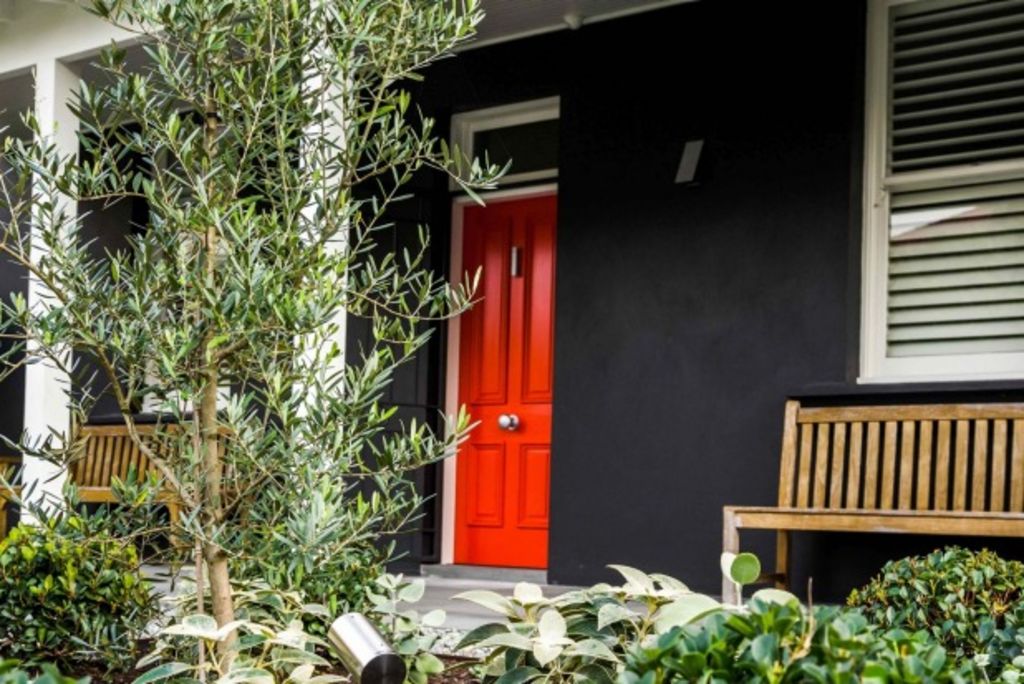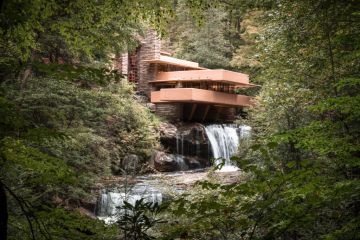How to maximise your home's street appeal

Houses are comprised of interiors and exteriors – yet so often the latter is subordinated. Whether you are simply house-proud, or getting your house ready to sell – it is worth giving some due diligence to your street appeal. As the saying goes, you only get one chance to make a first impression. Here’s what some of Australia’s leading garden designers have to say on the matter.
Plant man about town, Richard Unsworth, of Garden Life, says the golden rule is that house frontages need structure. “Formality works at the street level. This means repetition, mass planting, and avoiding messy chaotic planting schemes – but it doesn’t have to be boring.”

Mass planting and repetition. | Photo: Daniel Shipp
Unsworth suggests keeping planting simple yet bold:
- Neatness – instead of predictable low perimeter hedges, look at using softly clipped and mounding plant forms that can also flower for you. Indian hawthorn (Rhaphiolepis indica) is a great performer, as is Pittosporum Miss Muffet and the hardy shrub, Loropetalum, gives great colour.
- Small urban front garden – consider using one large feature pot and plant in the middle surrounded by a mass of ground cover.
- Larger suburban streetscape – keep things formal and elegant. You want to provide privacy from the street but not to the extreme of a huge barrier hedge. Plant small trees and shrubs where you do want privacy but leave some spaces more open where this is not an issue. Use a small deciduous flowering tree if you have the space. Spring blossoms, winter sun and summer shade – crepe myrtle, frangipani, magnolia.
- Perfume – is gorgeous for passers-by, or wafting into the house when the windows are open on a sunny day. Think jasmine, lavender, osmanthus, and gardenia.
But, if you are after something a little different, Unsworth says that edible gardens up front are gaining huge momentum. “My front garden is a productive herb and veg garden, which I often pick for salads. I use clipped specimens of Japanese box and Podocarpus to give it structure, scale and form. People love its natural aesthetic, and passers-by stop to ogle. My neighbours know they can pick parsley or rosemary for a roast and I love that,” he says.

Edible gardens up front are gaining momentum. | Photo: Richard Unsworth
Jane Stark, of Stark Design, says it is crucial to consider your colour palette. Current trends in exterior palettes follow crisp, more pure, neutral combinations with a restrained number of colour choices. “Let the architecture and natural building materials and landscape context speak. A successful on-trend colour combination of the moment is charcoal and white,” Stark says. Conversely things to avoid are using too many colour combinations, or colour combinations that are not respectful to the architecture of the house. “And anything with a faux finish!” Stark says.
The colour palette should also extend to your plant choices. “Select plants which have leaf and flower colours and shapes which complement the colour of the house – e.g. silver plants look wonderful with charcoal paint, inky dark green foliage looks perfect next to white walls, as do bright colours – think riotous bougainvillea,” Stark suggests.
Christopher Owen, principal of Sydney’s Christopher Owen Landscape Design, says: “The colour palette trend for house finishes and built landscape elements that require a coat of paint is sitting firmly in the white/grey/black spectrum for the moment, which is far more pleasing than what I call ‘Vaucluse Brown’ – which refers to anything in the beige/brown spectrum that was splashed over the rendered monoliths of said area in the previous decade.”

Co-ordinate your plants to your colour scheme. | Photo: Daniel Shipp
When designing a planting scheme for street appeal, the style of architecture is boss and is the best place to start, Owen says. “Are you living in a gorgeous cottage in Watsons Bay or Balmain or a super contemporary off-form concrete house in Chippendale. The cottage allows you to create something more ‘gardenesque’ with contrasting textures and form – think clipped teucrium fruticans, Miscanthus sinensis and Senecio serpens for example. Alternatively the contemporary house might look smashing with a drift of Miscanthus sinensis only”.
Penny Starr, of Melbourne’s Penny Starr Design, says: “When I think about street appeal, what springs to mind immediately is that the house and garden should feel welcoming and cared for. Paint can go a long way in making a house looked loved – and at the moment I really like soft grey with white windows, perhaps with the front door painted in French blue or burgundy for weatherboard period homes. I’m also loving contemporary architecture with timeless materials palettes – I love white or recycled bricks with black detailing on windows and doors and concrete, timber and steel never gets old.”
But what of that ubiquitous garden element – the fence? “Fences should be in keeping with the architectural style and hard-scaping materials that reflect the broader surroundings – bluestone, for example is very Melbourne whereas sandstone is so Sydney – providing a sense of place. Recycled materials can also be a great choice for injecting character and warmth.”

Clipped hedges provide formality. | Photo: Daniel Shipp
When it comes to plant selection, not all plants will grow in all gardens – and Starr makes the all-important point to always bear in mind your climate, soil type and aspect. If you are unsure, see what is thriving in your area. “And don’t forget about trees! Trees are really important elements in gardens and there’s a site-suitable tree available for nearly every garden. One beautiful feature tree in a small garden, or a few in larger spaces can make a big impact as well as providing a range of benefits such as shade, screening, seasonal interest and even food production values,” Starr says.
So, with some careful planning and consideration, your house can turn heads before viewers set foot inside. If you are not a gardener, consider getting a garden consultation from an expert to help you with your plant selections, and perhaps engage someone to maintain the garden every quarter to keep it looking good. It can add immense value to the worth of your home.
We recommend
States
Capital Cities
Capital Cities - Rentals
Popular Areas
Allhomes
More







